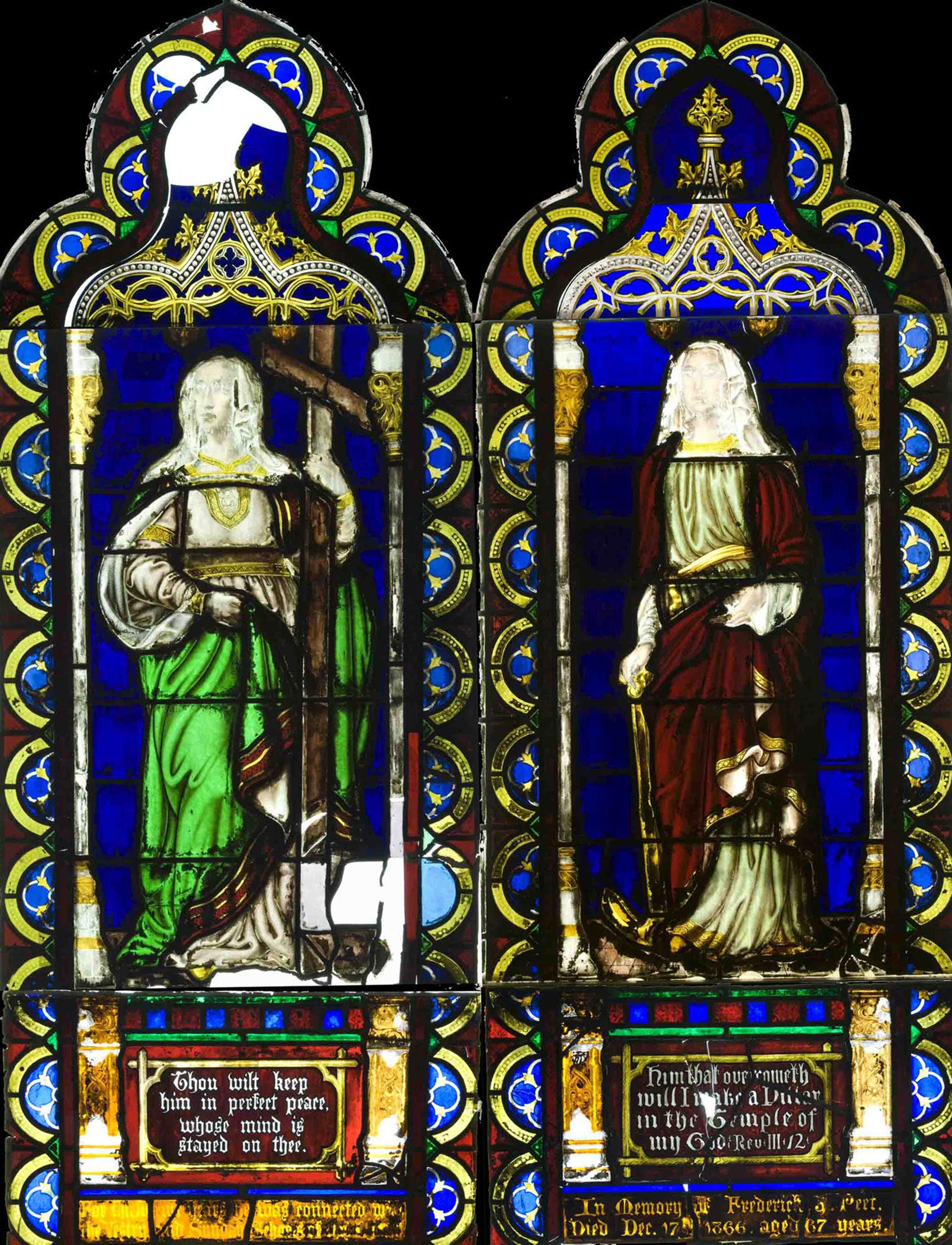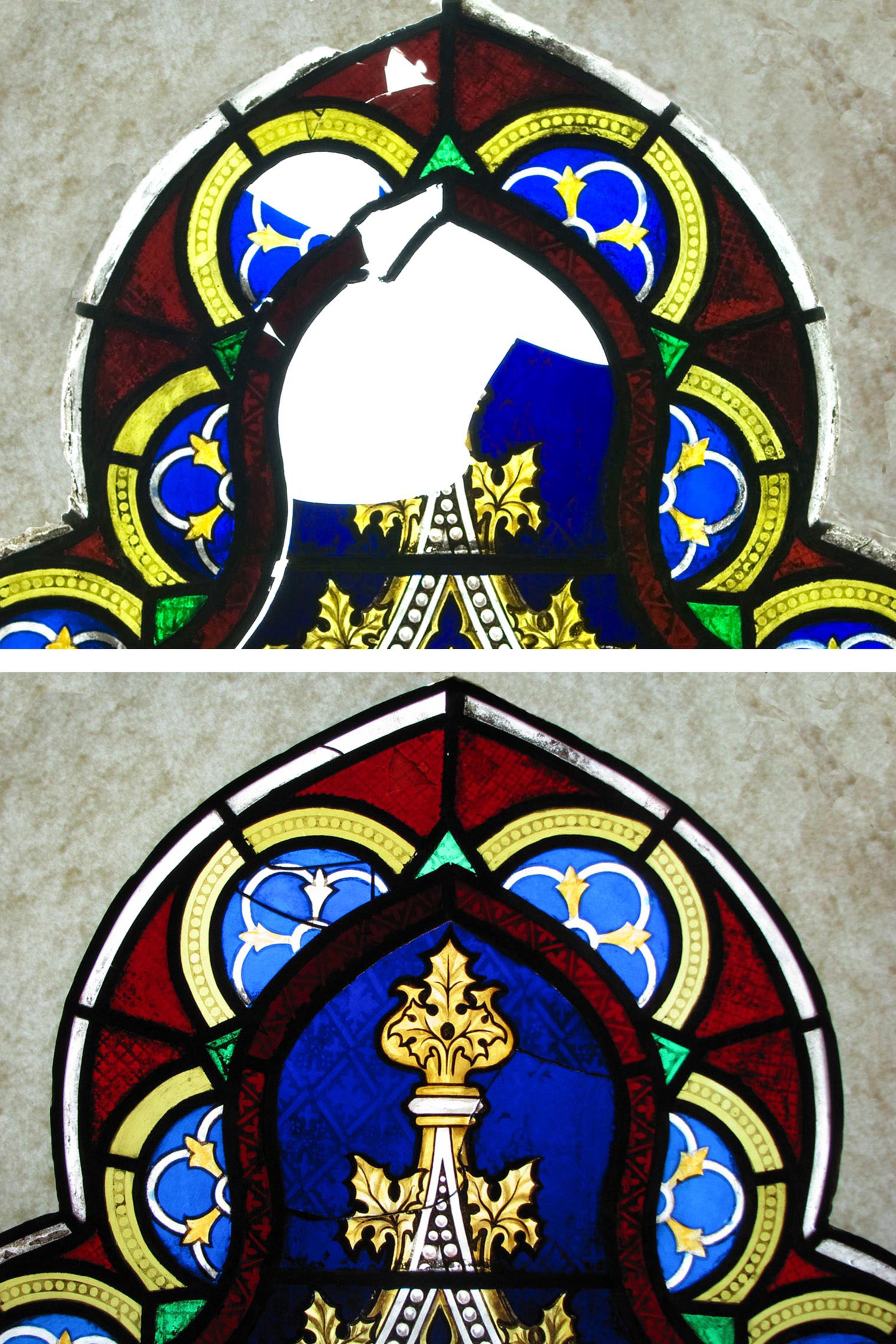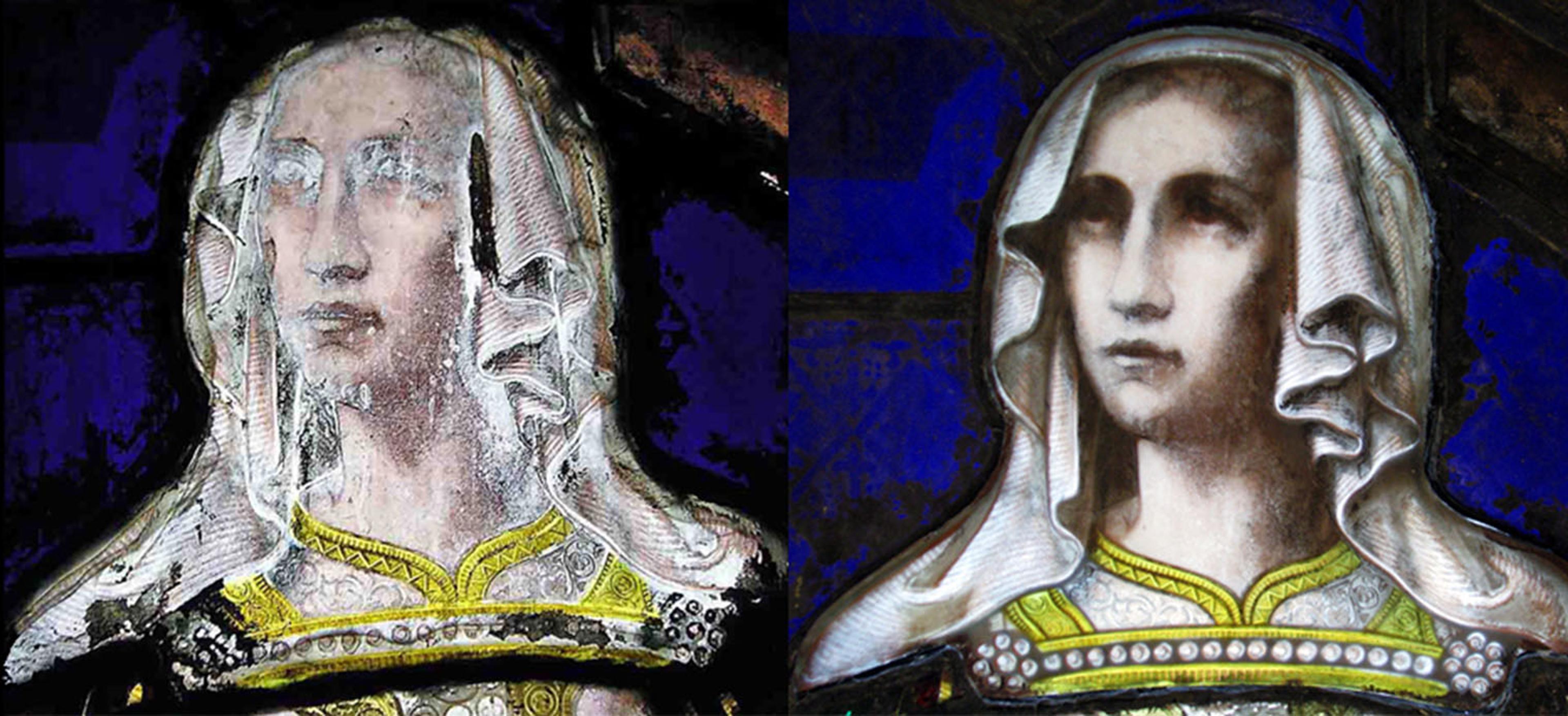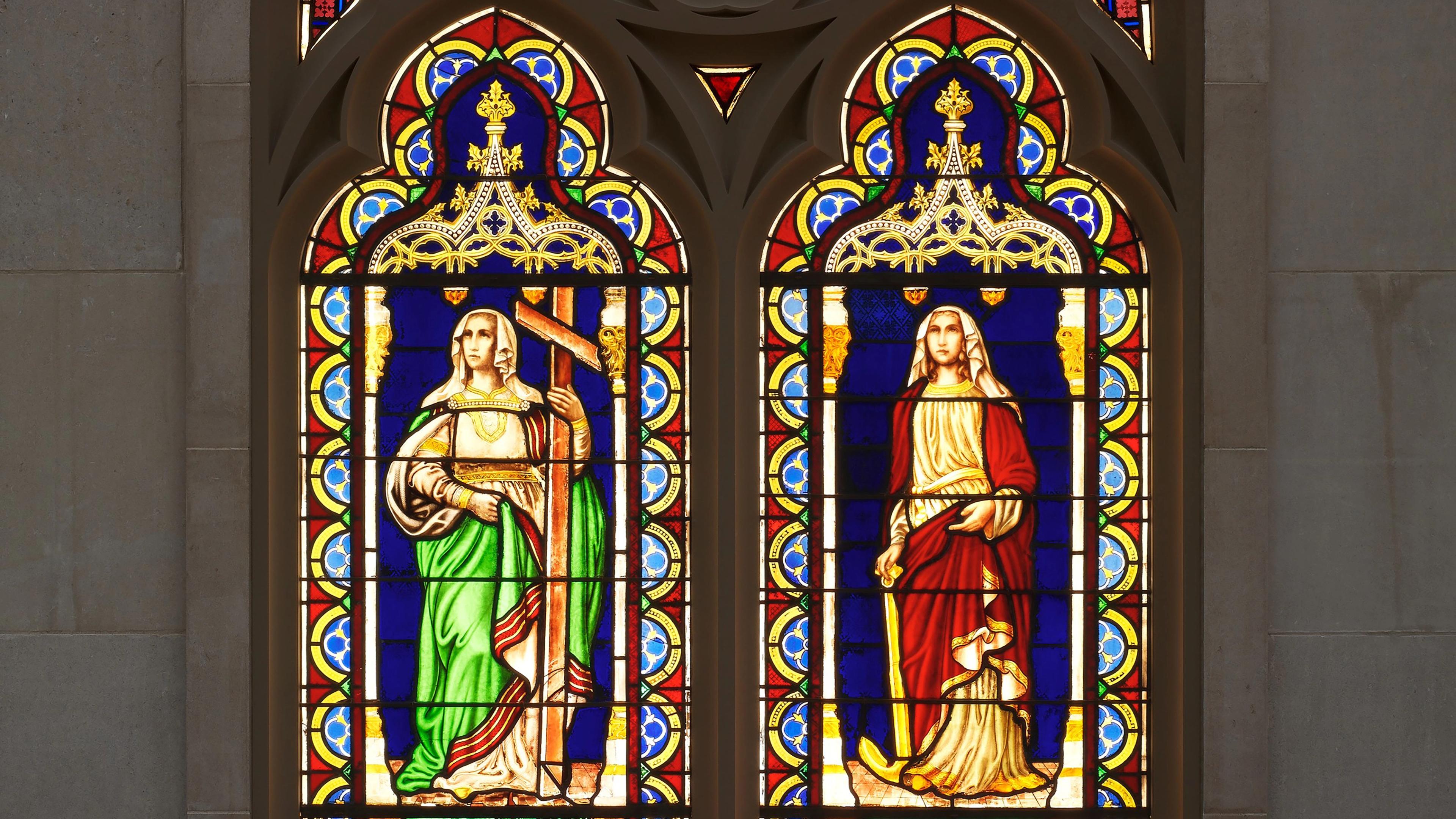A double lancet window depicting the personifications of Faith and Hope by the American artist Henry E. Sharp (active ca. 1850–ca. 1897) came from St. Ann's Church in Brooklyn, New York, where it had received little maintenance. A two-year conservation campaign included cleaning, glass repair, and reinforcement of corroded lead, before the window was installed in 2009 in gallery 706 of the Charles Engelhard Court in the American Wing.

The figures of Faith and Hope before conservation treatment
Long exposure to the urban environment in its original location resulted in several types of damage, including lost pieces of glass and deterioration of the painted surface. Additionally, some of the missing glass had been replaced with poorly executed restorations. The conservation treatment needed to address the question of how to improve the legibility of the work without compromising its integrity.
The identical canopies, or headers, above each figure had major losses to their original glass. The upper part of the Faith header was missing some fairly large pieces. There was an old restoration panel on the lower part of the Hope header that did not match the color or the painting style of the original. Fortunately, between the panels of Faith and Hope, all elements of the original design were extant. This meant we were able to re-create the missing glass by copying from the original without inventing design elements. For example, we were able to restore the Faith header by replacing the lost area with a new glass piece, replicating the original decoration on the Hope header.

Details of Faith header before and after conservation treatment. In the after-conservation image, a triangular, copper foil join is visible on the top left within the blue and white trefoil.
The replacement piece was made in the same manner as the original by cutting and etching a piece of blue flashed glass and using kiln-fired vitreous paint and silver stain. The new glass was joined to what was left of the original using a technique in which solder is applied to copper foil wrapped around the edges of the glass. The very thin solder join is easily distinguished from the original, thicker lead strips, known as cames, that hold the glass together. The solder join also serves the added purpose of delineating the original from the restoration. Similarly, the old restoration panel from the Faith header was replaced by a new piece copied from the existing Hope header.

Conservator Janis Mandrus painting the replacement for the Hope header based on the original Faith header
From an aesthetic point of view, the extensive paint loss to the faces of the figures of Faith and Hope was disfiguring. The viewer's eye is naturally drawn to the face, and the loss of paint left each face with a ghostly appearance—an almost negative image of what had originally existed. To return some legibility to these areas while leaving the original untouched, new glass plates were cut to the shape of the pieces on which the heads and shoulders were painted. Vitreous paint was then applied to these plates only in those areas corresponding to paint loss in the original. Once Sharp's original glass was superimposed over the new plate, the faces regained a more natural appearance. By this method of restoration the original has remained intact and the treatment is completely reversible.

The face of Faith before and after conservation treatment
Sharp's Faith and Hope window now anchors the south end of the West Balcony of the Charles Engelhard Court, in gallery 706.

Henry E. Sharp (American, active ca. 1850–ca. 1897). Faith and Hope, 1867–69. Stained glass, Approx. 204 x 78 in. (518.2 x 198.1 cm). The Metropolitan Museum of Art, New York, Gift of Packer Collegiate Institute Inc., 2002 (2002.232.1a–v)
For a more detailed discussion of the treatment, see Drew Anderson, Alice Cooney Frelinghuysen, and Janis Mandrus, "Rediscovering Henry E. Sharp: The Conservation of the Faith and Hope Window at The Metropolitan Museum of Art," in The Art of Collaboration: Stained-Glass Conservation in the Twenty-First Century, ed. Mary B. Shepard, Lisa Pilosi, and Sebastian Strobl, Corpus Vitrearum USA, Occassional Papers II (Turnhout: Brepols) 2010.
